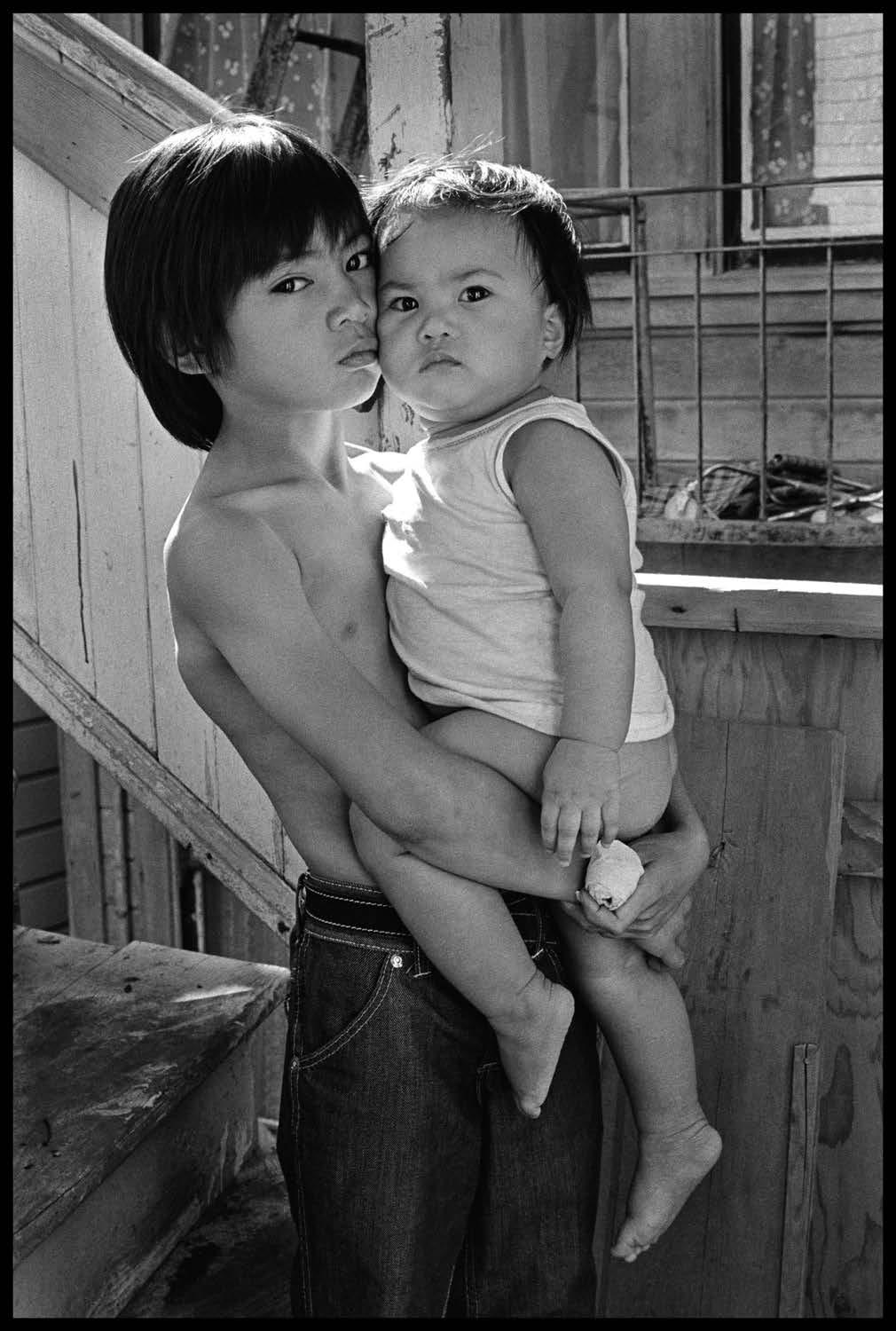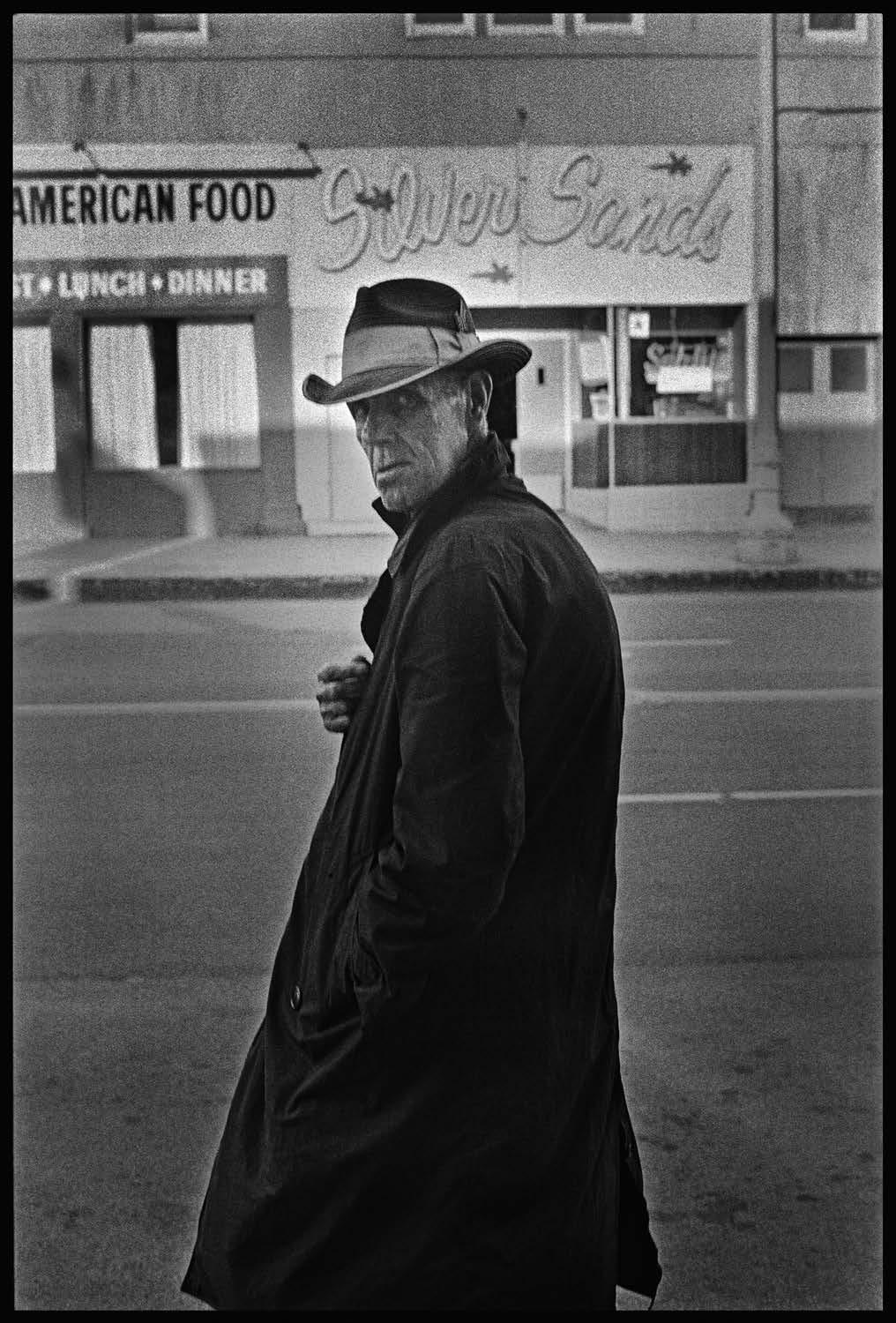

The Other California 1975

The Other California 1975
PETER TURNLEY
Preface
This is a book of photographs I made nearly fifty years ago of people that I encountered across the state of California during almost four months of driving thousands of miles throughout and to every corner of that state.
The people shown in these images, mostly of working-class backgrounds, all opened their lives and welcomed a twenty-year-old man to make a portrait of a moment in their existence. For the past five decades I have lived with the painful knowledge that most of these images have never been seen by the public. This book is published to honor the people seen here and to offer everyone a chance to consider them as well as that moment in time and history.
Forty-seven years ago, when I was nineteen and finishing my sophomore year at the University of Michigan, I received a letter from a woman, Deanna Marquart, who worked for the California Office of Economic Opportunity (OEO). She asked me if I would be willing to come to California for a commission to make a four-month road trip throughout the state to document the life of workingclass Californians, and in particular, the most impoverished people in the third largest state of the United States.
The director and staff of the OEO at that time believed in the power of the photograph to show and to evoke the need for social change. They believed that strong, honest photographs could serve to inspire and energize the government employee too often distracted by a maze of paperwork and statistics, and to remind the general public of the need for an effective social assistance program.
Since I started making photographs at the age of sixteen, I had been not only inspired by people like the great French photographer Henri Cartier-Bresson but many other photographers, too, including those who worked for the Farm Security Administration (FSA) one of the programs of President Roosevelt’s New Deal, developed during the Great Depression. The FSA photographers documented life in America with the intent of not only documenting a time in history; they envisioned photography as a means to affect change—and to draw attention to people whose voices were often not heard loudly, if ever.
I arrived in California in mid-May 1975 and was based in Sacramento, where I was given access to a government darkroom, but most of those four months, until the middle of August, I spent driving throughout the state.
In a small white Volkswagen, I was accompanied throughout that summer by my college sweetheart, Karen Gulliver, who was already an accomplished writer. I will always cherish memories of her presence with me throughout that extensive road trip and what that has always meant to me. I was given just enough expense money to cover gasoline, meals in diners, and the least expensive of California hotels. As I traversed this amazing state, more like a country than a state, with its remarkable diversity in population, geography, and ways of life, the whole experience became an important turning point in my life.
Having grown up in the Midwest, in Indiana and Michigan, I was not unfamiliar with rural America. But as a young man I was familiar only with the stereotypes of California—its beautiful coastline, surfers, and the images of Los Angeles, Hollywood, and San Francisco—and it was only during this trip that I became aware that California is the largest agricultural and rural state in the country.
During my travels, I spent much time in the San Joaquin Valley in places like South Dos Palos, Fresno, Bakersfield, Modesto, and in the farmlands in between.
I also spent a great deal of time in Oakland, Hunters Point, Bay View, and the Tenderloin of San Francisco, Watts in Los Angeles, San Diego, and the fields near Death Valley.
Among other subjects, I photographed many of the people who worked below minimum wage to put food on the tables of America.
For most of the past forty-seven years these photographs have lain dormant, seen by very few people. After my commission began, significant changes in the California Office of Economic Opportunity took place. The man who directed this assignment, Ed Villamore, resigned from the the OEO in the middle of my four-month road trip. Before returning to Michigan from California, I recall leaving an extensive set of prints behind, but all these years later, my memory is hazy as to whether these photographs were exhibited in the State Capitol in Sacramento. So I have lived for more than forty years with no certainty of how my photographs were actually ever used by the OEO.
Be that as it may, I am certain that these photographs are a document of an important moment in Californian, and American, history. I know they offer a sense of the texture and the emotions of the lives of the working class in the mid-1970s.
This book is a tribute to both that time and to the lives of the many people I encountered. The photographs speak for themselves and represent my belief and conviction that they must be seen.
Shortly after leaving California in the late summer of 1975, I was invited to dinner in New York by John Morris, a former photo editor of the New York Times, Life, and many other publications, and
he encouraged me to show these photographs to the great American documentary photographer W. Eugene Smith. The evening that I met Smith, he took me aside after seeing these photographs and said quietly, “Peter, you have a very good heart and very good eyes. No one will ever hold your hand in this profession, but you can do this, and you should go out, and always follow your heart, and be a photographer.”
On the heels of that advice, I dropped out of college for a semester and moved to Paris, my adopted home since 1978, where almost daily I have photographed the life of the city.
In my life as a photographer I have traveled to more than ninety countries and have covered most of the important geopolitical news stories of the world. My photographs have graced the cover of Newsweek magazine forty-three times and have been published in the world’s most prestigious magazines and publications, and I have published seven books.
I have always felt that the photographs in this book are among the most important I have ever made—yet most have never been seen.
It is never too late to share a vision of the world; this book at last presents the opportunity to share moments of lives that deserve to be seen and considered.
With love, Peter Turnley, Paris, June 2023











































































































































Acknowledgments
First I would like to thank Deanna Marquart, who contacted me in the spring of 1975, when she worked for the California Office of Economic Opportunity (OEO), to propose that I be commissioned to make a nearly four-month road trip throughout California to document mostly the working-class people of this marvelous state. I also thank Ed Villamore, who was the director of the OEO. All of these photographs exist because of their kind support and exemplary vision.
Karen Gulliver, my college sweetheart, who already an accomplished writer in the mid-1970s accompanied me on this journey. Every encounter, photograph, and minute of this trip was impacted by her beautiful spirit, heart, and humanity. While the photographs here are mine, every moment of trip was ours. I cannot thank Karen enough for not only for sharing the road with me, but for her recollections these many years later, and for her contribution as I was writing the foreword to this book.
My heart is filled with gratitude to Carl Westergren, my close friend and Paris assistant, who has spent tireless hours scanning the negatives and preparing all the photographs in this book. His help as well in the selection and layout of the images, was invaluable, and I could not have made this book without him. Thanks, too, to Martha Naranjo Sandoval, who helped greatly in creating the scans.
I want to thank Laura Lindgren, a wonderful designer, who has designed not only this book, but also French Kiss: A Love Letter to Paris, Cuba: A Grace of Spirit, and A New York–Paris Visual Diary: The Human Face of Covid 19. Laura’s expertise in design, editing, and book production, her wonderful sense of history, literature, and aesthetics has helped give marvelous direction to every aspect of the creation of this book and I’m grateful to her.
There are several people who have now passed that were major influences and very present directly or in spirit during the months I traveled through California: John Morris, Hansel Mieth, Imogen Cunningham, and W. Eugene Smith.
There are many people who have always been present and who have helped me through every moment of my life. I will always feel love and gratitude for Ann Turnley, Bill Turnley, David Turnley, Andrew Ehrenkranz, Malcolm Finlayson, Frank Veteran, and Michelle Zaffino.
From the bottom of my heart, I thank Yudaisy Roche Pavon, whose love has been such a fundamental and monumental part of my life these past many years.
My lifelong friend Philippe Bagot spent hours looking through the scans of all the photographs of this project, and his image editing and overall enthusiasm and support for making this book have been a very important inspiration.
I want to also thank my friend the publisher Pierre Bessard, who also has offered ongoing support for the making of this book. Gerald Zaltman has been a lifelong friend since my Nieman Fellowship at Harvard in 2000–2001. His insightful advice and thoughts have been very important in helping complete this book. My thanks go as well to Steven Strasser for his kind and caring thoughts regarding these photographs and the people seen within them, and to Pascal Rostain.
My special thanks to De Ying Daisy Liu and Sy Sung of 1010 Printing International Ltd.
I am sure there are numerous other people who have played a role in either the making of these photographs and book, and if I have inadvertently failed to name them directly, I certainly hope to have the chance to rectify this and thank them in the future.
Finally, this book has been published in tribute to the many people throughout the state of California who opened their to me lives in the summer of 1975 and allowed me to document a moment of their existence. Almost fifty years later, this book exists to honor them and to give the world the chance to finally consider them, their environment, and the world they lived in.
With love, Peter Turnley
The Other California, 1975 Peter Turnley
© 2023 by Peter Turnley
All rights reserved under international copyright conventions. No part of this book may be reproduced or used in any form or by any means, electronic or mechanical, including photocopying, recording, or by any information storage and retrieval system, without permission in writing. Inquires should be addressed to Images of Life, Inc., P. O. Box 32097, Mesa, AZ 85275-2097 USA or by email through www.peterturnley.com.
Designed, text edited, and typeset by Laura Lindgren
The text of this book is set in Berthold Baskerville Book.
First edition 2023
ISBN: 978-0-692-44884-7
Printed by 1010 Printing, China.

